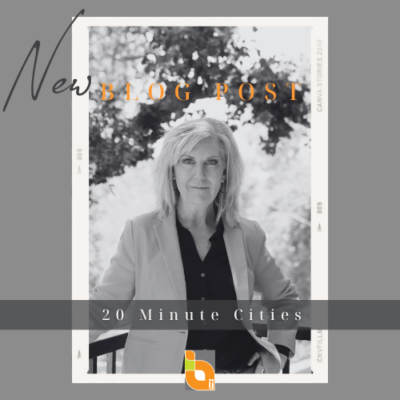 Could the Foothills of La Crescenta-Glendale Be a 20-minute city?The “20-minute city” is an urban planning concept in which residents can access most of their daily needs—such as work, shopping, healthcare, education, and recreation—within a 20-minute walk or bike ride from their homes. This model emphasizes creating self-sufficient, walkable neighborhoods that reduce automobile reliance, promote sustainability, and enhance quality of life. It’s closely related to the “15-minute city” concept, which operates on similar principles but with a slightly shorter time frame. It paints a picture of convenience and community, but what does it mean for an area like the Foothills of La Crescenta-Glendale?
Could the Foothills of La Crescenta-Glendale Be a 20-minute city?The “20-minute city” is an urban planning concept in which residents can access most of their daily needs—such as work, shopping, healthcare, education, and recreation—within a 20-minute walk or bike ride from their homes. This model emphasizes creating self-sufficient, walkable neighborhoods that reduce automobile reliance, promote sustainability, and enhance quality of life. It’s closely related to the “15-minute city” concept, which operates on similar principles but with a slightly shorter time frame. It paints a picture of convenience and community, but what does it mean for an area like the Foothills of La Crescenta-Glendale?
Currently, local projects seem to manifest in a haphazard manner—such as the failed Brand Blvd. bike lane initiative, the ongoing La Crescenta Ave Rehabilitation project, which has left many residents frustrated and unaware of its inception, and the Visionary project for the Verdugo Wash, which is also facing community pushback. Rather than forming a cohesive plan, these efforts may appear more like political pet projects than a unified vision tailored to the needs of the residents.
Applying the 20-minute city model to the unique topography of La Crescenta-Glendale presents significant challenges. The steep slopes and elevation changes will likely pose significant hurdles to mobility. Proposed solutions like terraced walkways and hillside elevators may be discussed, but the practicality and feasibility of such designs are critical to analyze.
Public transportation could expand to connect neighborhoods; however, will this be sufficient to address the area’s elevation challenges? Could micro-transit services provide options to enhance connectivity, or do they merely serve as temporary fixes for deeper systemic issues?
Zoning changes promoting mixed-use development might support integrated residential and commercial spaces, potentially reducing lengthy commutes. However, density bonus projects are being met with additional resistance from long-term residents. Where is the middle of the road between adding more housing, moving around the community without bumper-to-bumper traffic, and having necessities within reach?
Cities such as Melbourne, Portland, Paris, and Lisbon have adopted the 20-minute city concept with varying degrees of success. For instance, Melbourne focused on neighborhood planning to ensure essential services are within a short walk, while Portland developed complete neighborhoods with affordable housing and strong public transit systems. Paris expanded bike lanes and pedestrian-friendly zones effectively, reducing car dependence, and Lisbon tackled its hilly terrain through funiculars and electric buses. Each of these examples offers valuable insights, but the relevance of their strategies to the unique challenges faced in La Crescenta-Glendale requires careful consideration.
While municipalities like Los Angeles and Glendale are taking steps toward pedestrian-friendly environments and expanding public transit, the effectiveness of these measures remains to be seen. Is there sufficient commitment to prioritize these changes before tackling issues tied to car infrastructure?
Ultimately, transforming La Crescenta-Glendale into a 20-minute city may seem inspiring, but it raises fundamental questions. Can this goal realistically accommodate the area’s distinct geography and community dynamics? Or does the hilly, suburban nature of the foothills render such aspirations impractical? What do you think—are these changes worth pursuing, or should the community explore different priorities? Your thoughts are welcome as this conversation evolves.

